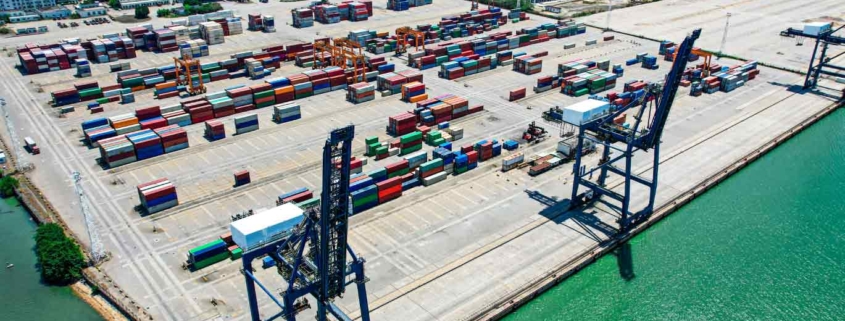“New technologies that are transforming the management of container and cargo ports”
Containers and cargo ports are key infrastructures for international trade. The rapid growth of global commerce has led to an increase in the volume of goods moving through these infrastructures, generating the need to improve efficiency and control in their management. But what is currently being done to achieve this? Here is a summary of the most important technologies in port management:
Terminal Operating Systems (TOS).
These systems allow container port operators to control and supervise port operations, from the arrival and departure of ships to the loading and unloading of containers on land. TOS is a comprehensive solution that provides a complete view of the port and enables operators to make more informed and efficient decisions.
Among the benefits of using TOS are reduced waiting times, improved efficiency in planning container loading and unloading, and increased port capacity. A successful example of TOS implementation is the Port of Rotterdam, the largest port in Europe. The implementation of TOS in Rotterdam has reduced waiting times for ships and increased port capacity to handle more containers.
Another technology that is increasingly being used in the shipping industry is the Internet of Things (IoT).
IoT allows port operators and customers to track and monitor the location of goods in real time. This helps improve transparency and visibility in the supply chain, which in turn helps prevent theft and loss of cargo or containers.
In addition, IoT is also used for predictive maintenance. IoT sensors can monitor equipment conditions and detect problems before they become serious faults. This allows port operators to schedule preventive maintenance instead of having to perform expensive repairs on damaged equipment. A successful example of IoT implementation is the Port of Hamburg, where IoT is used to monitor the temperature of perishable goods containers.
Image recognition technology and data analysis This is another technology being used in the shipping industry to improve efficiency in loading and unloading containers. This includes the use of surveillance cameras and image analysis software to monitor container movement and detect problems in real time. For example, the Port of Singapore uses surveillance cameras to monitor container movement and prevent collisions.
Robotics
The implementation of robotics has also been part of the digital transformation of ports, as robots can assist in loading and unloading containers, reducing the need for labor and increasing efficiency in the loading and unloading process. For example, the Port of Qingdao in China uses robots for container loading and unloading in an automated terminal, which has significantly improved productivity and efficiency.
In conclusion, the adoption of new technologies such as TOS, IoT, image recognition and data analysis, and robotics are allowing container and cargo ports to improve efficiency and control in their management. These technologies enable better supervision of operations, process optimization, reduced waiting times, and prevention of cargo losses, while optimizing resources and increasing net income.









